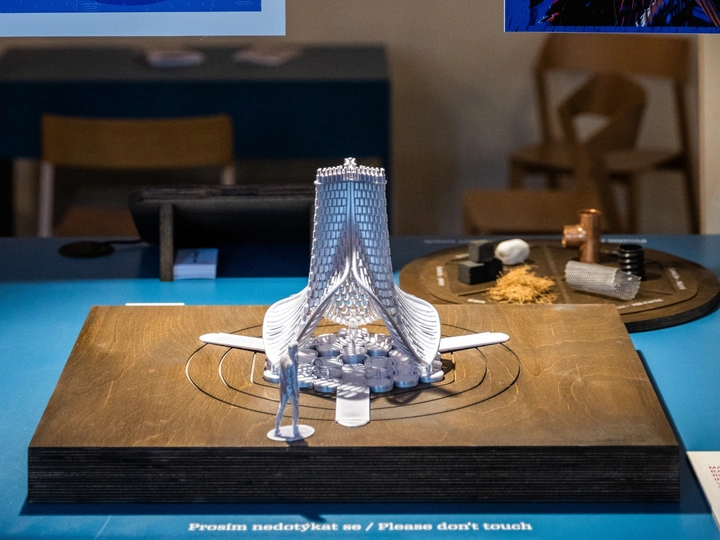The Rainwater Fountain

I am a graduated designer with the experience of an architect and the soul of an artist. My path has led me from a smaller scale of product design to a larger scale of interior design and architecture. As I believe that these disciplines cannot exist one without the other, I am always eager to become a part of a creative group where these disciplines not only intersect, but can be enriched with other disciplines too.
I graduated from the Royal College of Art in 2020. I gained my work experience in the architectural studios Laboratorio de Arquitectura in Paraguay, Petr Hájek Architekti in Czechia, and in Foster and Partners in the UK.
The way the city looks, the way it feels, the way people behave, is different when it’s wet. Water everywhere dripping, pooling, and disappearing
without ever being used.
The Rainwater Fountain is a speculative and poetic space. Designed to be
beautiful, to make people think and to test ideas. It is a response to the
water scarcity caused by high-density urban living. It is an exploration of
how materials can be used to harvest rainwater and how water and materials can be combined to create an arresting space. A place where people can take a moment, pause, and enjoy a refreshing drink.
The Rainwater Fountain is produced from a series of modular charcoal briquettes held together with a network of coir ropes. Bunched at the top and flared at the base, the briquettes are contained and supported by a ribbon
of black anodised aluminium that provides both structure and the entrance to the space. Underfoot is an etched glass floor floating above a series of connected copper lined barrels.
When it rains the water is captured, channeled, filtered and disinfected by the materials so that it is made safe for people to drink. The materials are also used to create an arresting atmosphere and sensorial experience. The finishes are dark to heighten sensations; the sound of drips, the glinting reflections of wet surfaces, the smell of the rain and the feeling of humid air.
At the centre of the space is an elegant drinking fountain
that is illuminated from above by an oculus. People are
invited to quietly reflect and enjoy a drink of the rainwater
that normally passes us by.
The Rainwater Fountain shows how rainwater can be captured in cities and turned into drinking water. By doing so, it seeks to change the way people perceive rain in the urban environment. The rain does not come to our cities so we can hide from it. It comes to us so we can celebrate it.